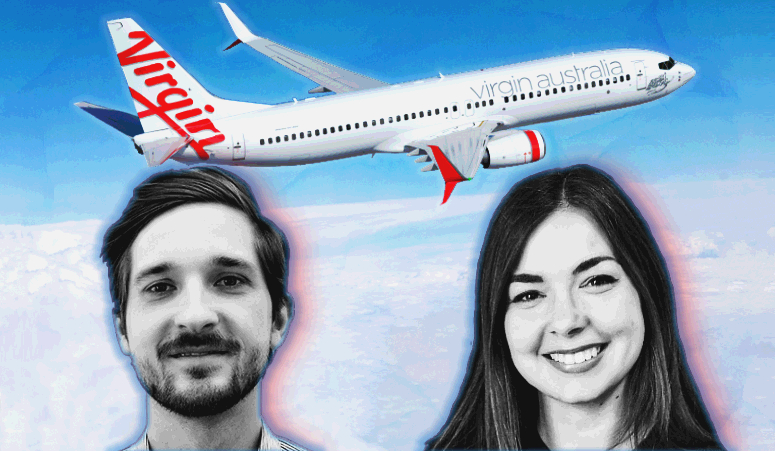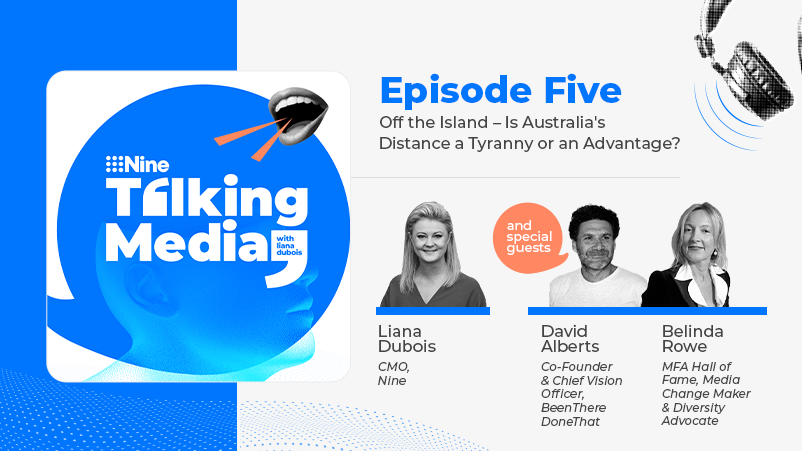Dream flight: How Virgin’s decimated marketing team launched an automated creative campaign with 80,000 'full funnel' ad variants, lifted revenues 30%... but now worries brands must cede more control to Google, Meta under new privacy regime

The killer combination of Covid and voluntary administration decimated Virgin Australia’s marketing team to a handful. However, under its new private equity owners, Bain Capital, Virgin’s head of paid media, Ben Will, was finally able to deploy a massively scaled and personalised programmatic ad campaign that he had been dreaming about for years, though he seriously stretched the Virgin team and its media and dynamic creative partners at PHD and Adylic in the process. After launch, it took months to fine tune but they survived. The team ultimately lifted revenues 30 per cent and won the MFA’s top award for real-time marketing for their efforts. But Will is worried new privacy laws will hand much of the control he currently has to "test and learn" to the walled gardens like Google and Meta, where their unknown tools and AI do all the optimisation without any visibility for advertisers.
What you need to know:
- Ben Will, Manager, Group Paid Media at Virgin Australia was part of a small marketing team that still remained after Covid and voluntary administration. That team needed a big plan and revenue results – and Will led a highly complex programmatic media and dynamic creative campaign with 80,000 variants that required some hard calls to maintain sanity.
- The lift in Virgin’s click-through rate [CTR] by using “relevant creative” was “mind-blowing” per Will – flight searches through Virgin’s own channels increased 50 per cent, revenues lifted 30 per cent and Will estimates had Virgin not launched this personalised, programmatic program, the airline’s incremental revenue gains “would have been of half that”.
- Creating the decision tree – or rules determining which user saw what ad messaging in which media channel, based on where they were in their process to book travel – was so complex they had to halt the process and stop creating new rules.
- PHD’s Group Digital Director Andrea Potter said the decision tree document for serving creative and ads “became so vast…we couldn't remember how the creative should behave because we had forgotten how all of the decisions had been created.”
- So they embarked on a major cull and eventually launched knowing that it would take months to even get to test and learn. There were some fixes first.
- The results were massive. Within a couple of months “were better than anything we have ever achieved”, per PHD's Potter. As well as revenue gains, the efficiency wins from not having to manually set up campaigns (as it is still running) are huge, says Will.
- But he thinks there is a "bit of a sad" ending coming with privacy overhauls ultimately forcing brands to cede control and visibility to the platforms.
- Listen to the full story here, via the Mi3 podcast.
We've seen a lot of developments where you just feed your business signals into the black box of the walled gardens and then you get your creative delivered and the AI is optimising… you can't really control it anymore – and that’s because of privacy laws.
Ben Will had a dream – the kind that would probably have kept Carl Gustav Jung awake at night: Build and deliver dynamic content served programmatically to drive sales for an airline coming out of voluntary administration at a cost and efficiency price point that made everybody happy, particularly owners Bain Capital. They say dream big. So he went with 80,000 ad variants.
With a “biblical” level of complexity, Will’s dream could have quickly turned into a nightmare. Instead, the program was so successful it delivered 30 per cent increase in revenue on media spend versus historical norms – and landed the MFA award for real-time marketing. Here’s how they did it.
In the beginning…
The first challenge was to pull together a crack team, with PHD and dynamic creative optimisation specialists Adylic forming the bedrock.
Then they had to draw up a decision tree. “That’s where it became really complicated,” says Will. “Everybody had a lot of ideas and the decision tree developed into what we called ‘the Bible’, this frighteningly large document.”
PHD Group Digital Director, Andrea Potter, says the document became so vast it got to the point “where we couldn't remember how the creatives should behave because we kept forgetting how all of the decisions had been created.”
The Adylic team warned that with so many rules and potential for conflict, something was going to break.
So they took a step back, questioned the value of adding rules versus the return offered, and started hacking back a decision tree that was threatening to give the Amazon rainforest a run for its money.
Through-funnel: Dreaming to booking
Virgin wanted to take a through-funnel approach. At the top, “inspirational content” for those at the “dream layer”, per Will In other words, for people starting to think about a holiday after months of lockdowns.
Next came the planning layer “showing all the different offers that we have available for different places, focusing on the price points and the offers that we have available,” says Will.
The KPI was “getting people to come to our website and actually just do a flight search. We don’t want people to just book. We want them to do a flight search to get those data points: When do they want to fly and when was the moment when they said they want to fly; when did they visit our website to do a flight search? So we could combine these data points to understand where in the journey they are sitting.”
This fed the bottom of the funnel – “the book layer” – basically retargeting, but done well.
“You come to the website, you do a flight search and we know where you want to go,” per Will. “We know have you done multiple flight searches. Have you gone for the same destination or maybe for different destinations? That [data] gave us a bit of a difference around how we should cater to that user in terms of the creative that we deliver,” he adds. “So that layer was all about direct response, getting them back and finalising the booking, driving direct revenue.”
All of those funnel steps had different creative, and still have, says Will, “because it is still running really well. But that is how we catered to different data points, different creatives. Plus, there were also what we call all the exclusion rules… to make sure we can funnel the user really well through all the different steps.”
The launch: slow climb
“When we activated … it wasn’t like suddenly all the planes were full. Because that's not what it's about, it's not a big bang campaign. It's an always-on approach that is continuously optimised,” says Will.
“Given how many rules we had, it took us a few weeks, months even, to get it all smooth and ensure every creative delivered as expected. So that's what happened. We just activated it and then nothing directly happened on day two. But after a few days and weeks, we realised how amazing it is that we don't have to manually set up new campaigns all the time because it's already covered,” adds Will. “If we've got an offer in market, it's automatically included in our always-on on campaigns. And that's when we then really started to ramp up our test and learn program.”
"We were realistic. We didn’t expect it to be completely perfect from the get-go. [But within a couple of months, the results] were better than anything we have ever achieved.
Testing and learning
For the first few weeks it was less testing and learning, and more making sure that everything was working, says PHD’s Andrea Potter. Then fixing anything that wasn’t. “We were realistic. We didn’t expect it to be completely perfect from the get-go,” she says, given the project’s complexity.
Within a couple of months, incoming results “were better than anything we have ever achieved”, she says, which is when they started to iterate.
That process has consisted primarily of tweaks to creative rather than anything structural, says Potter. “For example, testing the customer value proposition that we were surfacing in the creative, the colour of the CTA [call to action] button, the CTA message itself, different imagery that could maybe be more appealing to the person. So if you're going to Queensland, something that was more city versus nature,” she says. “So we did a lot of different iterations to make sure that we always surfaced what was the most appealing to the individual. And it is on-going. We never stop testing, we never stop learning.”
Clicks, revenue start to climb
Will says he knew the campaign was starting to work when click through rates (CTR) started to gain altitude.
“There was one very specific moment where we applied DCO [dynamic creative optimisation] in a highly contextual environment – and that's where I just had this moment of happiness,” says Will. “Because CTR is maybe not a measure that shows revenue or business metrics, but it shows how relevant a creative is. And it actually jumped by three times to .75. That’s not even one per cent and if you don’t know programmatic, you’d be thinking ‘that’s tiny’.”
But to Will it was “mind blowing” to see how much a more relevant creative moved the needle versus a standard optimised creative. “It was just so good to see that it actually really worked.”
Overall, the campaign is outperforming Virgin’s pre-Covid work, which is what it’s benchmarking against. “All metrics have been up, click through rate and conversion rate.”
Will acknowledges that there are some variables, such as pricing and market sentiment, that make like-for-like comparisons almost impossible.
“But on the optimisation metrics within the actual campaigns, that's where you could really see the benefit of that activity,” he says, plus the operational efficiency of “not having to set up new campaigns manually – because no one is really excited about doing that.”
PHD’s Potter underlines how strong the results were – at a time when revenue was critical for Virgin.
“We launched this in late October 2020, and most of our media had been paused until that point because the airline had just gone through administration. At that point, we were still in the early stages of the pandemic. People were starting to travel again, but there was still some hesitation – and all we really wanted to do was to capture that demand and try to increase revenue at a time where it was really important for the business.”
Running the numbers in mid-2021 versus nine months of the pre-Covid period, “the performance was amazing,” says Potter. “As Ben says, there are many variables so you can’t completely isolate it, but revenue increased by 30 per cent and people were almost 50 per cent more likely to drive a flight search through our channels [via] this specific real-time approach.
“So not only was the performance was great, but also we protected Virgin Australia's bottom line at a moment where it was really crucial for them to ensure that we were driving revenue.” Not to mention re-engineering Virgin’s always on approach.
“We were more efficient than ever, very streamlined. We weren't taking as long to deliver creative messaging or creative variants. We were just running the most relevant message and offer to people where it was crucial,” she adds.
‘If we’d not done this, we’d have missed half the money’
Pushed on what would have happened if Virgin had not embarked on its biblical dynamic creative project, Will is reluctant to commit to numbers. But he says the approach was fundamental.
“It was literally the enabler of advertising and promoting markets at scale. It wouldn't even have been possible to promote the market to the degree that we've done [if not via this approach]. But the incremental value question is hard to answer. Within the funnel, it sits at 30 per cent [revenue gains].
“If we wouldn't have done that, or had done it differently, it probably would have been half of that, and that [revenue] would just have been missing,” says Will.
“But once you run an activity and it's in market, you always build on top. And we've been building things on top of each other for a very long time in a very complex portfolio strategy. DCO is one layer of multiple different channels and activities that we're running all the time, so it’s adding on top – and it's really hard to isolate individual campaigns. But the sum of it all is just so important to build the baseline of the revenue that we're driving.”
What next: A sad ending?
How does Virgin top this – and what is next on its roadmap? PHD’s Potter says the plan is to build a “completely cookie-less solution” for its dynamic approach while also plugging in to Virgin’s loyalty program, Velocity. In terms of channels, she’s keen to push further into video with dynamic creative, including BVOD, as well as offline channels such as digital out of home.
For Virgin Airways’ Will, “the outlook is actually a little bit sad”. He thinks that privacy law changes will likely mean that companies will have to hand over most things to the big platforms.
“In all these different data points and in what we have done [to date], we really controlled everything. We controlled the set-up, the creative, the data and we were able to deliver based on what we think is best. But I don't think that will be possible in future,” says Will.
“We've seen a lot of developments where you just feed your business signals into the black box of the walled gardens and then you get your creative delivered and the AI is optimising. So what we'd be doing is provide the right reasons why someone should be booking, the right price points, great imagery and ad copy, the right business signals – where do we want to promote things – and our first party data,” says Will.
“So we put that all into creative templates and we leave it up to Google or Meta to just optimise it. And you don't really know what is happening, you just look at the results and you drive your incrementality test to make sure it's still delivering value. But at the end of the day, you can't really control it anymore – and that’s because of privacy laws,” add Will.
“For example, on some DSPs [demand-side platforms] you can't use your CDP [customer data platform], your first party audiences within HTML5 banners. So that's why they are all coming up with their own approaches – because I guess tech platforms fear that there's too much one-to-one communication and that might not be privacy friendly.”
While he underlines that Virgin “has always been acting in a very compliant way,” it’s the ceding of control and visibility to the platforms that pains him.
PHD’s Potter agrees privacy rules are “only going to get more and more strict. So I think we just have to develop solutions that are very compliant”. She thinks that will likely lead to digital advertising and its supply chain becoming increasingly reliant on “machine learning and algorithms to make some decisions for us – and we're just going to have to leverage that to make decisions for customers. But we're not going to be able to do one-on-one or talk to people like we have in the past.”
Will says that is one of the upsides of putting in the work upfront on the DCO-always on-approach.
“It actually works perfectly within contextual environments. We just take the signals out of the context of the website – what is it about – and then use that to dynamically in real-time adjust our creative so it reflects that [environment]. So that's been really exciting and that's where we've already been seeing really good performance uplift,” says Will. “Overall, I think our setup is pretty future-proof already in the way we're doing things. So I'm quite confident about that. But yeah, obviously [the regulatory picture] is going to change.”
Key watch outs for 2023: Privacy, measurement and back to brand
Given incoming change, with sweeping privacy proposals last month published by the Attorney General, “Privacy and making sure everyone is aligned with that is probably the number one” watch out for 2023, says Will.
“Otherwise the revival of brand marketing and reduction of performance-based direct response is something to keep in mind because direct response measurement is going to be harder. So we'll have to do things differently,” he adds.
Will thinks that may force digital marketers to think more broadly – which he suggests is no bad thing.
“I'm really keen to use our DCO setup to also run more emotional creatives with the objective to not only drive direct response, but also change the perception of our consumers. Be a little bit more top of mind consideration and not directly expecting someone to take an action after seeing or clicking an ad, but just being aware of our offers. So I think that would be a really great addition to our current campaign,” says Will.
It’s put to him that it’s refreshing to hear performance marketers talking about brand and full funnel approaches. Will agrees – but thinks that better application of data to brand decision-making is an equally necessary evolution for Virgin Airways and beyond.
“Making data-driven decisioning, whether for performance marketing or brand marketing … I think that definitely is going to improve the whole full funnel mix in future," says Will. "So I'm quite excited about that. I think we've gone through a great learning curve in the last few years.”



